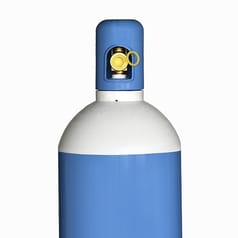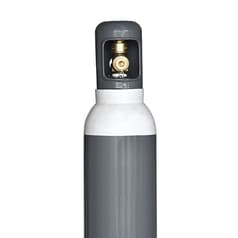Pour bénéficier d’un affichage optimal de la boutique en ligne de PanGas, vous avez besoin pour le navigateur de la version minimale suivante:
• Internet Explorer 9.0
• Mozilla Firefox 38
• Safari 8
• Chrome 45
Veuillez vous assurer que JavaScript est activé dans les paramètres de votre navigateur.
Burners for the glass industry
A higher standard for melting efficiency in the glass industry
Melting processes using only oxyfuel are most common in glass furnaces. No combustion air and heat recovery systems are required here. The flame temperature is higher, the furnace atmosphere remains free of nitrogen, and glass furnace emissions are reduced. It is one of the most efficient ways to melt glass.
Advantages
- Very low NOx levels and lower emissions (smaller carbon footprint)
- Increased glass quality
- No preheating of the air needed
- Higher furnace throughput
- Smaller filter installation
- Higher productivity due to smaller deviations in the combustion process
Special burners developed by Linde
We offer a wide range of burners for all oxyfuel melting processes. The models below are the most commonly used standard systems:
- COROX®-I: Ceramic burners
- COROX®-II: Flexible burners
- CGM®: Crown burners for furnaces (Convective Glass Melting)
- Flat flame burner: Flame with low thrust
COROX®-I burners are very compact and robust. They are usually installed in smaller melting furnaces. To ensure maximum flexibility, they are combined with lances for stepped combustion.
COROX®-II burners are designed for the most demanding applications. They fit perfectly in all types, shapes and sizes of furnaces. They are especially suitable for larger furnaces, where flexibility and performance are the highest priority.
Performance specifications and fuels:
Benefits of COROX®-II
- Different flame shapes
- Different flame directions with angles up to 10°
- Adjustment during operation / adjustment devices
- Low heat profile and luminous flame
- Quick installation
Convective Glass Melting (CGM) Burners
This unique oxyfuel technology transfers additional heat to the glass melt. This is due to the vertical - rather than horizontal - positioning of the burners, which enhances the heat transfer by also providing convection, in addition to the usual transfer by radiation. Experiments have shown that the combination of radiation and convection in conventional burners results in double the heat transfer.
Benefits of CGM burners
- Increased melting capacity
- Increased glass quality
- Vertical burners in the crown, rather than horizontal
- Increased furnace life
- Flexible number of burners (no limitations due to space on the parapet)
- Proven technology, already successfully in use by companies such as Owens-Corning
- Ideal for all market segments, including float glass, glass for packaging and specialty glass
- Can be adapted to air-fuel furnaces or 100% oxyfuel
Flat flame burner
A flat-flame burner provides even heat distribution. This benefits product quality, productivity and the life of the furnace's refractory material. Furthermore, the radiation of the flame is greater and the low mixing ratios of oxygen and fuel result in low NOx emissions.
CGM® - Convective Glass Melting
Using advanced melting technologies to speed up the melting process
Producing glass economically means balancing energy use with productivity and quality.
Linde's Convective Glass Melting (CGM®) can help you meet these challenges effectively. CGM is a unique oxyfuel technology that transfers additional heat to the glass melt by positioning the burners vertically instead of horizontally. This creates convection, combined with the normal heat transfer via radiation, to enhance heat transfer. This proven technology is offered worldwide by Linde under the registered trademark CGM®. The process is patented; additional patents are pending.
CGM® technology optimizes both air-fuel processes and oxyfuel processes. The technology has been successfully implemented in all market segments (float glass, container glass and specialty glass). By placing burners vertically, CGM® technology transfers more heat by combining radiant and convective energy. The gas velocity for horizontal burners near the production lot/glass surface is very low. The gas velocity of CGM® burners is relatively high, resulting in a significantly higher heat transfer coefficient.
CGM® burners are designed to create an intense flame above the surface of the glass bath or batch. This creates extremely high temperatures near the surface and enhances convection and radiant energy. Experiments have shown that the combination of radiation and convection in conventional burners results in almost double the heat transfer.
Benefits
- Energy savings (fossil fuels, electricity)
- Increased glass quality
- Increased lifetime of the furnace
- Flexible in the choice of the number of burners (no space restrictions on the parapet)
- Proven technology, already successfully in operation at companies such as Owens-Corning, a global leader in advanced glass systems
- Can be adapted to furnaces with air-fuel or 100% oxyfuel
- Vertical burners in the crown of the glass melting furnace
- Doubling of heating power compared to conventional burners due to the combination of heat transfer by radiation and enhanced convection



